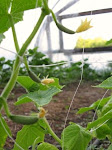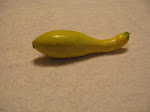
Lakes and Valley CSA news week 5
July 28 delivering to PR & DL, July 31 to Dilworth and Fargo
Anne’s cell number 218-252-5858
In your veggie boxes this week:
Raspberries
Mesclun lettuce with incredible, edible flowers and cherry tomatoes
Broccoli or cauliflower florets
First green beans
Green onions
Toscano and Red Russian Kale leaves mixed with Chard and Arugula for sautéing
kohlrabi
Beets with tops
Peas—snow and sugar snap in 1 bag, shell in another
Cutting celery (tastes like celery, looks like flat-leaf parsley) or Flat leaf parsley
Basil
Hoophouse Cucumber
Green or gold zucchini or patty pan squash or yellow crookneck squash* see attached photos to identity varieties
Fargo members – it’s your turn for eggs
Congratulations! You’ve eaten your way through the first act of the CSA season. Our first stars were a little green, but they smashed records for the number of salads delivered without bolting.
Now we’re transitioning into Act 2, entitled “Variety!” More greens will be attached to something, eg. beets with beet greens. We will harvest mesclun as successive plantings come ready, and are toying with the idea of a salad made with only edible flowers. The blooms are appearing in exponentially increasing numbers. Spinach will encore in September.
Beans, carrots, cucumbers, zucchini and tomatoes grow increasingly plentiful in late July and August. Grill sliced vegetables alongside burgers and buns, or treat yourself to a new cookbook and play in the kitchen. With truly fresh produce, everything you make will look like the pictures.
Then there are the raspberries, ambrosia for both plate and palate. Boyne and Nova ripen now. Both red, Boyne are softer, squishier, perfect for stirring into soft vanilla ice cream. Novas hold together. You can stick them on the tips of your fingers and pop them, one by one, into your mouth. Royalty raspberries come later, deep purple, lusty as a vintage red wine.
With so many things to harvest, we welcome help on delivery days. If you’ve been wanting to work in the garden, now is the time. We start at 7:00 am. Water-resistant footwear and a long-sleeved shirt that you can take off when the sun rises over the east woods are advised. You don’t have to be a CSA member. Call ahead 218-252-5858.
Loren and Andrea Haverinen have local organic pork for sale. Give them a call at
218-564-5480 or go to their website http://customer.wcta.net/theranch
Sautéed Chard and kale
1 bag CSA chard and kale (can add arugula)
1 Tablespoons butter
1 Tablespoon oil
Salt and pepper to taste
Cut tender stems into pieces and leaves into strips. Heat butter and oil in a skillet. Add stems and sauté for 1 minute. Add leaves, toss to coat, then cover and simmer 3 to 4 minutes. Season to taste.
Kale contains high levels or beta carotene, vitamins A and E, folate, calcium and potassium. Like other brassicas, Kale is rich in bioflavonoids that help protect against cancer.
Summer Quiche
2 cups chopped mixture of chard, kale and summer squash
½ onion, chopped
3 whole eggs
1 egg white
½ cup milk
1 and ½ cups grated Swiss or cheddar cheese
½ teaspoon salt
¼ teaspoon pepper
1 teaspoon chopped fresh basil
½ teaspoon chopped fresh oregano (1/4 teaspoon dried)
Steam chard, kale and summer squash with onions until tender. Set aside to cool slightly. Preheat oven to 375 degrees F. Beat eggs thoroughly. Add milk, cheese, salt, pepper and herbs. Stir in cooled, steamed vegetables. Pour mixture into medium-sized oiled casserole dish. Cover. Bake until set, approximately 30 to 40 minutes.
Raspberry Salsa
2 cups fresh raspberries
2 peaches, peeled and finely chopped
½ cup minced red onion
1 or 2 hot peppers, seeded and finely chopped
juice of 1 lime
1 Tablespoon red wine vinegar
1 teaspoon honey, turbinado or brown sugar
¼ teaspoon salt
Combine all ingredients. Refrigerate for at least half an hour to allow flavors to blend. Makes about 2 ½ cups salsa.
We’ve sown cilantro 2 in the bunching onions 1 bed. Hooray for successive sowing!
Cilantro Pesto
1 cup fresh cilantro leaves
½ cup fresh parsley leaves
½ cup fresh basil leaves
2 garlic cloves
1 mild hot pepper, toasted, peeled and seeded (optional)
½ teaspoon salt
½ cup grated Parmesan or Asiago cheese
2 to 3 Tablespoons fresh lime juice
4 Tablespoons olive oil
Place cilantro, parsley, basil, garlic and optional pepper in food processor. Pulse until well blended. Add salt, cheese and lime juice. While food processor is running, add oil in a steady stream. Allow to process until a thick, smooth paste forms. Makes approximately 2 cups pesto.
Quick Grated Beets
4 medium-sized beets
1 Tablespoon butter or oil
1 to 3 Tablespoons fresh lemon juice (to taste)
3 to 6 Tablespoons water or vegetable stock
½ teaspoon salt
freshly ground pepper
chopped fresh dill or parsley
Wash, peel and grate beets. Heat butter or oil in a skillet. Add beets and stir to coat. Sprinkle with lemon juice. Cover and cook for approximately 10 minutes. Stir occasionally and add water or stock as needed to prevent scorching. Cook until just tender. Season with salt and pepper. Garnish with dill or parsley. Serves 4.
Salad with Eggs, Ham and Tomato Vinaigrette
2 heads csa lettuce
½ cup tomato vinaigrette (see recipe below)
2 hard boiled eggs
2 green onions, thinly sliced
¼ pound Serrano ham, cut in thin strips
¼ cup green or black olives
Tear lettuce into bite-sized pieces and put in salad bowl. Toss with some of the dressing. Arrange on a planter and top with eggs, ham, green onions and olives. Spoon remaining dressing on top. Serves 4
Tomato Vinaigrette:
1 ripe large tomato, peeled, seeded and coarsely chopped
1 clove garlic, minced
1 teaspoon pimentón dulce (sweet Spanish paprika)
½ teaspoon ground cumin
¼ teaspoon sea salt
2 Tablespoons sherry vinegar
3 Tablespoons olive oil
Combine tomato, paprika, cumin and salt in blender or food processor. Pulse to a purée. With motor running slowly, add vinegar, then oil.
Fattoush (Lebanese tabbouleh)
4 large or 8 small pita breads
3 mdium tomatoes, cut into half-inch dices
½ cup finely diced red onion
6 Tablespoons finely chopped white and green onions
1 cup chopped fresh flat-leaf parsley
½ cup thinly slivered fresh mint
1 to 1-1/2 cups basic citrus dressing (see recipe below)
4 cups loosely packed CSA lettuce, cut into 1-inch wide strips
Heat oven to 350 degrees. Place pita breads in a baking sheet and bake until dry, about 15 minutes. Remove from oven. When cool enough to handle, break into large, bite-sized pieces.
In a large salad bowl, combine tomatoes, onions, parsley and mint, and toss with half the dressing. When ready to serve, add pita pieces and lettuce, and toss with remaining dressing.
Basic Citrus Dressing:
Whisk together in a bowl:
1 cup olive oil
½ cup fresh lemon juice
salt and pepper to taste.
Grilled Pizza
Dough:
1 and 1/3 cups lukewarm water
2 Tablespoons oil
1 packet active dry yeast
1 and ½ Tablespoons coarse salt
1 and ½ teaspoons sugar
3 and ¼ cups unbleached flour
Combine water, oil, yeast, salt and sugar in a large bowl (or food processor or blender with dough hook attachment.) Stir in flour and mix until incorporated. Cover with a clean cloth or plastic wrap and let stand at room temperature until dough rises and collapses, about 2 hours. Refrigerate for up to 3 days.
Sauce:
1 Tablespoon oil
1 large cloves garlic, minced
1 cup finely chopped fresh tomatoes (about 1 large) or 1 cups strained canned tomatoes
2 Tablespoons chopped fresh oregano (1/2 teaspoon dried)
optional; a pinch of crushed red pepper flakes
Heat oil in a small saucepan. Add garlic and cook for 30 seconds. Stir in tomatoes, oregano and optional pepper flakes. Cook, stirring, for 1 minute. Cool. Refrigerate if not using immediately in a covered jar for up to 3 days.
Assemble pizza:
Shred 1 cup mozzarella cheese
toppings of your choice
Preheat grill to high. Grease two baking sheets and dust each with 1 Tablespoon cornmeal. Divide dough in half. On a lightly floured work surface, roll each piece of dough into a 12-inch round and pinch a raised lip around the edge. Place rounds on baking sheets and brush with oil. Carefully slide into grill and cook until bottom is firm and “grill-marked,” about 5 minutes. Flip over, and working quickly, top each half with tomato sauce and cheese. Close grill cover and cook until cheese just melts, about 5 minutes more.
We will soon have for you heads of green and red cabbage.
1 cup olive oil
½ cup fresh lemon juice
salt and pepper to taste.
Grilled Pizza
Dough:
1 and 1/3 cups lukewarm water
2 Tablespoons oil
1 packet active dry yeast
1 and ½ Tablespoons coarse salt
1 and ½ teaspoons sugar
3 and ¼ cups unbleached flour
Combine water, oil, yeast, salt and sugar in a large bowl (or food processor or blender with dough hook attachment.) Stir in flour and mix until incorporated. Cover with a clean cloth or plastic wrap and let stand at room temperature until dough rises and collapses, about 2 hours. Refrigerate for up to 3 days.
Sauce:
1 Tablespoon oil
1 large cloves garlic, minced
1 cup finely chopped fresh tomatoes (about 1 large) or 1 cups strained canned tomatoes
2 Tablespoons chopped fresh oregano (1/2 teaspoon dried)
optional; a pinch of crushed red pepper flakes
Heat oil in a small saucepan. Add garlic and cook for 30 seconds. Stir in tomatoes, oregano and optional pepper flakes. Cook, stirring, for 1 minute. Cool. Refrigerate if not using immediately in a covered jar for up to 3 days.
Assemble pizza:
Shred 1 cup mozzarella cheese
toppings of your choice
Preheat grill to high. Grease two baking sheets and dust each with 1 Tablespoon cornmeal. Divide dough in half. On a lightly floured work surface, roll each piece of dough into a 12-inch round and pinch a raised lip around the edge. Place rounds on baking sheets and brush with oil. Carefully slide into grill and cook until bottom is firm and “grill-marked,” about 5 minutes. Flip over, and working quickly, top each half with tomato sauce and cheese. Close grill cover and cook until cheese just melts, about 5 minutes more.
We will soon have for you heads of green and red cabbage.
Here’s a recipe for freezing Cole Slaw:
8 to 10 cups shredded cabbage
1 carrot, grated
2 teaspoons salt
2 cups sugar
1 cup vinegar
¼ cup water
1 teaspoon celery seed
1 teaspoon mustard seed, optional
Mix cabbage, carrot and salt. Let sit 1 hour. Drain. Combine remaining ingredients and bring to a boil for 1 minute. Cool and stir into drained cabbage. Let sit 1 hour. Mix well and put into freezer containers.
How to freeze cabbage
Cut into coarse shreds or thin wedges. Blanch in boiling water for 1 to 2 minutes. Cool immediately in cold water. Drain, package and freeze. Use in cooked dishes.
8 to 10 cups shredded cabbage
1 carrot, grated
2 teaspoons salt
2 cups sugar
1 cup vinegar
¼ cup water
1 teaspoon celery seed
1 teaspoon mustard seed, optional
Mix cabbage, carrot and salt. Let sit 1 hour. Drain. Combine remaining ingredients and bring to a boil for 1 minute. Cool and stir into drained cabbage. Let sit 1 hour. Mix well and put into freezer containers.
How to freeze cabbage
Cut into coarse shreds or thin wedges. Blanch in boiling water for 1 to 2 minutes. Cool immediately in cold water. Drain, package and freeze. Use in cooked dishes.











